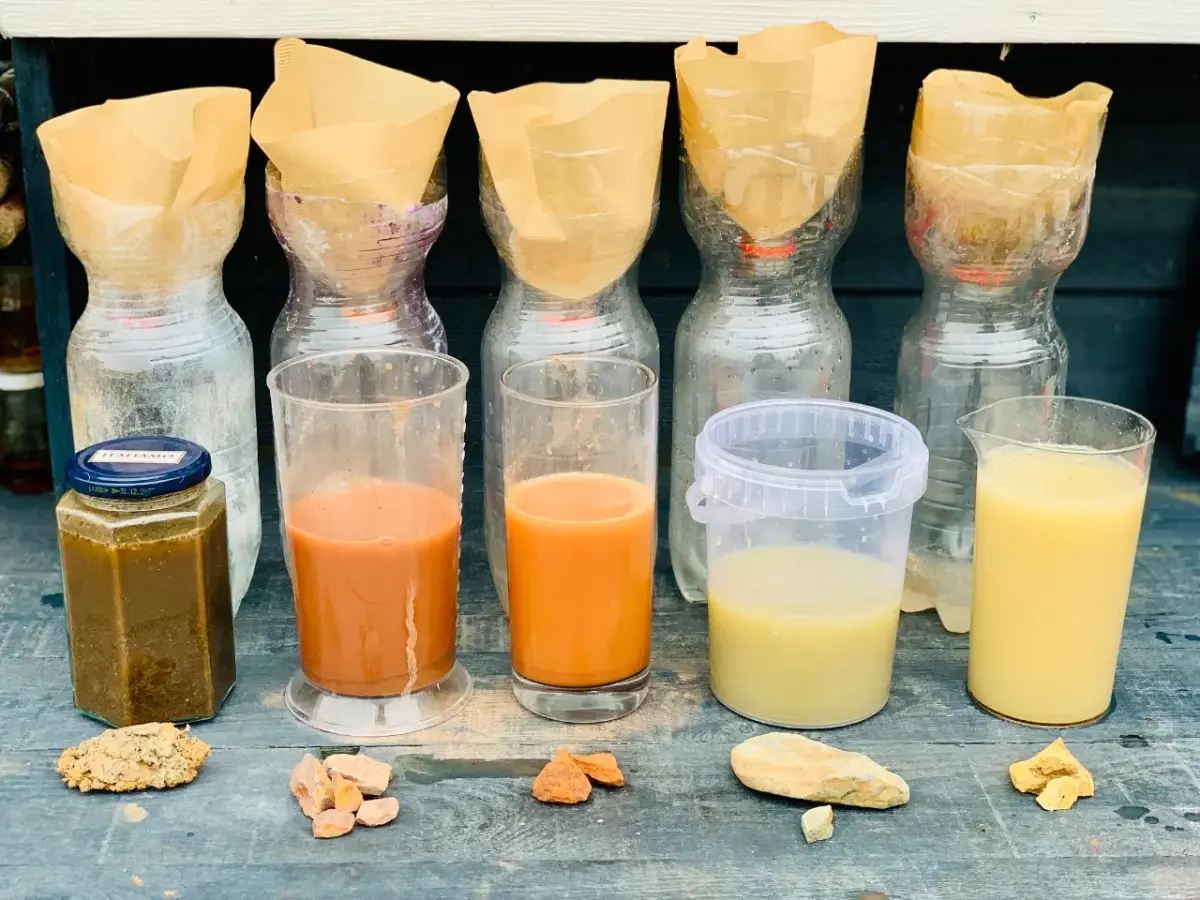blog 5 Earth pigments
On the Road with Emily!
Over the past year, Erik and I have been busy with all kinds of projects. Not just working on the new level in the studio, but also on Emily — our Citroën Jumper van, which we’ve completely transformed into a camper! This was a dream we talked about on one of our very first dates… so it was about time 😅.
After months of work, she’s now officially approved by the RDW (the Dutch road authority) and registered as a camper! We’re hoping to explore many beautiful places with her. And of course… from every spot we visit, we’ll be bringing back a little bit of earth.
But what can you actually do with that? 🌺
⸻
Painting with earth
When you buy paint in a shop, it’s always a mix of pigment and binder.
Back in the Middle Ages, there were no synthetic pigments. Paint was handmade from natural pigments — from ochre, madder root, or minerals. These pigments were mixed — or, as artists called it: “ground” — with egg yolk as a binder to create paint.
Today, most paints are synthetic. But it’s much more fun to make your own using natural materials! Below I’ll explain the process briefly — you’ll find a more detailed version (with photos) in my book Kleurboek.
⸻
How to make your own pigment
1. Find a suitable stone or earth.
Look for a soft stone that leaves colour when you draw with it on the ground. Or find earth with a beautiful hue — often found deeper underground, under fallen trees or on hillsides.
2. Grind it finely.
• Using stone? Break it into smaller pieces with a hammer (watch out for flying shards!). Then crush it as finely as possible with a mortar and pestle.
• Using earth? You can start grinding straight away.
3. Filtering.
Place 4 to 5 tablespoons of the powdered material in a glass of water and stir well.
• Plant matter will float — skim this off with a spoon or small sieve.
• Heavier particles like sand will sink to the bottom. You don’t want this in your paint! Carefully pour the coloured water into a clean glass, trying not to pour any sand along with it. Discard the sand.
4. Repeat the process until only coloured water remains. In the end, you’ll be left with a fine pigment — without sand!
Left: fine pigment.
Right: sand residue.
5. Let the pigment dry.
Pour the coloured water into a coffee filter or cloth and let the pigment dry.
6. Make your paint!
Mix (or “grind”) the dry pigment with egg yolk as a binder — and you’ve created your very own natural paint.
This is a wonderful process to try with children. Especially in France, you’ll find the most beautiful earthy tones. Perfect for a summer holiday project! 🌈
Have fun!
⸻
Stay inspired
From natural inks to hand-shaped ceramics — here I share recipes, stories, and quiet craft from my studio in Norway.
Want to read more? Follow Lilly’s Fable on Instagram or sign up for the newsletter.




